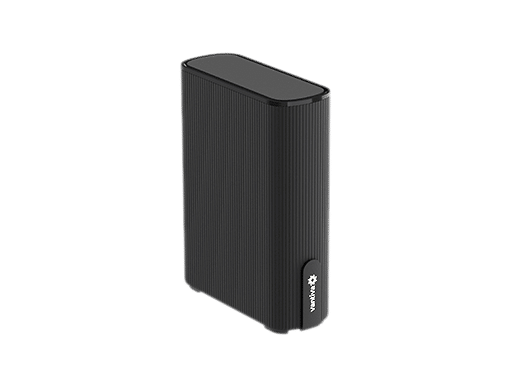In the ever-evolving landscape of technology, the demand for faster, more reliable internet connectivity continues to surge. Whether you are working from home, streaming high-definition content, or engaging in intense online gaming, a robust Wi-Fi network is essential. Tri-band Wi-Fi 7 extenders, enriched by the innovative MLO (Multi-Link Operation) feature, are poised to redefine the boundaries of connectivity. In this technical exploration, we will delve into the intricate workings of tri-band Wi-Fi 7 extenders, understanding the pivotal role played by MLO in optimizing spectrum dynamics.
The Tri-Band and MLO synergy
Tri-band Wi-Fi 7 extenders can boast three distinct frequency bands – one 2.4GHz band, one 5GHz band, and one 6Ghz band. This tri-band configuration plays a crucial role in alleviating common pain points users experience with dual-band extenders. It reduces network congestion and optimizes device connections while enhancing speed and throughput. Enhanced by MLO, tri-band extenders provide dynamic band assignment, allowing for the intelligent allocation of devices to the least congested band in real-time. Indeed, the extender operates with a comprehensive understanding of the available channels and their associated bandwidths across all three frequency bands. This awareness is critical for assessing the current network conditions and determining the most suitable band for a device connection. This dynamic band assignment is made possible thanks to 4 key technical capabilities we are going to explain below.
Client Steering Algorithms
By utilizing advanced client steering algorithms, the extender continuously monitors the performance metrics of connected devices. Parameters such as signal strength, throughput, and latency are analyzed to assess the quality of the connection on the current band.
The decision-making process involves a complex interplay of algorithms and real-time analysis to ensure intelligent band assignment. Let’s break down how extenders process this information and make decisions in real time.
Signal Strength Analysis:
The extender continuously monitors the signal strength of connected devices on the current band. Signal strength is a crucial metric indicating the quality of the wireless connection between the device and the extender. The extender sets predefined signal strength thresholds that indicate the optimal, acceptable, and poor signal quality levels. Based on the real-time signal strength readings, the extender dynamically adjusts these thresholds to adapt to changing network conditions. If the signal strength falls below an acceptable threshold or experiences fluctuations indicating potential interference, the extender considers this information in the decision-making process for band assignment.
Throughput Analysis:
Another parameter is the actual data transfer rates (throughput) between the extender and connected devices on the current band. This involves assessing the efficiency of the channel in delivering data packets from source to destination. The extender dynamically allocates bandwidth to devices based on their throughput requirements. If a device’s demand for bandwidth exceeds the capacity of the current band, the extender considers alternative bands for optimal bandwidth utilization. Throughput analysis also contributes to the extender’s decision on Quality of Service (QoS), ensuring that bandwidth is allocated according to the priority and requirements of each connected device.
Latency Assessment:
The extender monitors the latency or delay in communication between devices and the extender on the current band. Low latency is crucial for applications like online gaming and video conferencing, where responsiveness is paramount.
When a band is congested or overloaded with traffic, MLO enables to redistribute this traffic seamlessly through less congested or more suitable bands.
To do so, the extender may set latency thresholds based on application requirements. If latency exceeds acceptable levels, indicating potential congestion or network issues, the extender considers alternative bands to optimize connection quality.
To process all this information, the extender employs a weighted algorithm that assigns importance to each metric based on the extender’s operational priorities and user requirements. This algorithm performs real-time analysis, considering the latest measurements of signal strength, throughput, and latency for each connected device. Then it prioritizes devices based on their specific needs and dynamically optimizes band assignments to ensure an equitable distribution of resources while minimizing interference and congestion.
If the current band is deemed suboptimal based on the analysis, the extender initiates a dynamic band switch for the affected device, seamlessly transitioning it to a less congested or more suitable band.
The extender may incorporate machine learning elements, allowing it to learn from historical data and adapt its decision-making process over time. This continuous learning enhances its ability to anticipate network conditions and make more informed band assignment decisions.

Load Balancing Mechanisms
To distribute connected devices across the available bands, the extender implements intelligent load-balancing mechanisms. To do so, it continually assesses the traffic load on each band, considering the number of connected devices, the bandwidth demands of each device, and the overall network capacity. It aims to distribute the load evenly, preventing bottlenecks and ensuring efficient use of available resources. Load balancing takes into account the prioritization set by the decision-making processes we previously discussed. For example, devices with stringent latency requirements may be prioritized in the load-balancing process to ensure they are allocated to bands with low latency characteristics. All of this ensures an equitable allocation of resources, preventing the saturation of any particular band and minimizing the risk of network congestion.
Real-Time Spectrum Analysis & interference mitigation strategies
The extender performs frequency spectrum scanning to assess the utilization of channels in the 2.4GHz, 5GHz, and 6GHz bands. This involves actively monitoring the available channels for ongoing activities, signal strength, and potential sources of interference. It analyzes interference patterns within the spectral environment to identify potential sources of interference, such as neighboring Wi-Fi networks, Bluetooth devices, or other electronic devices operating in the same frequency range. Based on interference analysis, it may dynamically adjust the band assignment for specific devices to mitigate the impact of interference. This ensures a more stable and reliable connection when multiple wireless devices are working at the same time. It also identifies channels with high occupancy, providing a comprehensive view of the spectral landscape. By evaluating the spectral environment, the extender gains insights into the ongoing activities of neighboring networks and potential sources of interference. This information is crucial for making decisions about band assignments to avoid congested or noisy channels.
BSS Coloring for Enhanced Coordination
Basic Service Set (BSS) Coloring in Wi-Fi 7 plays a pivotal role in extenders’ dynamic band assignment. First introduced with the Wi-Fi 6 standard, BSS Coloring uniquely identifies different BSSs operating on the same channel. Each BSS is assigned a specific color, allowing extenders to distinguish between overlapping networks and coordinate band assignments more effectively. BSS Coloring enhances spatial reuse by enabling multiple BSSs to share the same channel without causing interference. Extenders leverage this capability to optimize spectral efficiency and reduce the impact of co-channel interference.
As we can see, tri-band Wi-Fi 7 extenders represent a technological marvel and become a strategic move, effectively addressing the connectivity challenges of the modern era. Armed with real-time data on network conditions and device performance, they make instant decisions to optimize band allocation for each connected device. When one of them moves within the coverage area, they ensure that the transition to a different band is swift and imperceptible, maintaining a consistent and reliable connection. This dynamic approach not only enhances the overall throughput but also contributes to a more responsive and adaptive wireless network.











